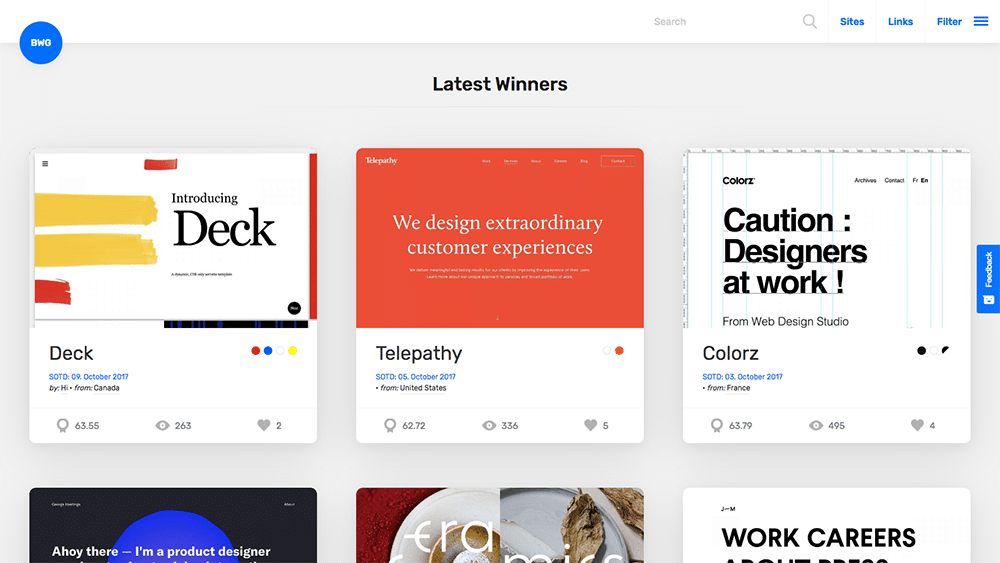Essential Elements of Efficient Website Style: A Comprehensive Guide
In the world of digital existence, reliable site layout is essential to accomplishing both user complete satisfaction and company purposes. The function of aesthetic pecking order and high-grade web content can not be undervalued, as they substantially influence user communications and assumptions.
User-Centric Style Concepts
User-centric style principles form the foundation of efficient website design, focusing on the needs and experiences of the end customer. These concepts are rooted in recognizing user actions, preferences, and obstacles, making sure that the internet site offers its designated target market effectively.
At the heart of user-centric layout is empathy. Designers have to participate in thorough user study, employing methods such as studies, meetings, and usability testing to gather insights right into customer expectations. website design in singapore. This info informs style decisions, bring about user-friendly navigating, clear details design, and involving visuals
One more trick element is ease of access. A site needs to be functional for people with varying capabilities, sticking to well established requirements and standards. This commitment not only boosts individual experience but likewise widens the potential audience.
Additionally, iterative style is essential. By constantly checking and fine-tuning the internet site based on user comments, designers can adapt to developing requirements, ensuring the site stays appropriate and effective. In summary, user-centric design principles cultivate a deep understanding of completion user, bring about a more interesting, available, and inevitably effective internet site. This foundational approach lays the foundation for all succeeding layout factors to consider.
Importance of Responsive Design
A receptive design is important in today's digital landscape, where a considerable part of internet traffic comes from mobile phones. As users gain access to sites on a selection of display sizes, from mobile phones to tablets and larger displays, making certain that a site adjusts perfectly to these different dimensions is vital for keeping use and involvement.

Additionally, a receptive layout minimizes the requirement for several variations of a website, streamlining maintenance and decreasing growth prices. As opposed to developing different desktop and mobile websites, a single responsive layout can fit all individuals, improving updates and material administration.
Eventually, the relevance of a responsive layout can not be overstated; it is a basic part of efficient web site design that guarantees access, enhances user satisfaction, and supports general service goals in an increasingly mobile-driven world.
Visual Hierarchy and Appearances
Three crucial elements-- visual pecking order, visual appeals, and performance-- play a critical duty in see here now effective internet site style. Visual hierarchy refers to the arrangement and presentation of elements on a webpage to guide individuals' focus and focus on information. By using dimension, shade, contrast, and spacing strategically, designers can make certain that the most essential web content attracts attention, resulting in enhanced customer engagement and understanding.
Aesthetics, on the other hand, includes the total visual appeal of the site. A natural color combination, unified typography, and well-chosen imagery add to a pleasing layout that reverberates with the target audience. A visually enticing website cultivates trust and trustworthiness, encouraging customers to discover even more.
Moreover, aesthetic hierarchy and aesthetics must function in tandem with functionality to produce a reliable individual experience. Stabilizing these elements guarantees that customers can browse the site without effort while taking pleasure in an appealing aesthetic experience.
Smooth Navigation Approaches
A reliable website design not only astounds individuals aesthetically however additionally assists in smooth navigation, which is crucial for preserving individual engagement. A well-structured navigating system allows individuals to locate details promptly and efficiently, enhancing their general experience.
To achieve seamless navigating, prioritize a clear and instinctive food selection design. Utilize descriptive tags for food selection items, ensuring that customers can conveniently comprehend the material they will certainly encounter. Moreover, take into consideration implementing a breadcrumb route. This attribute makes it possible for see here now individuals to track their area within the website, allowing them to navigate back to previous areas effortlessly.
In addition, employ a search function that is prominently positioned and easy to utilize, offering individuals the capability to situate details content without comprehensive browsing. It is likewise important to preserve consistency across all web pages; comparable navigating elements need to appear throughout the site to prevent confusion.
Lastly, make certain that your navigating is responsive, adapting seamlessly to various devices and screen sizes. A mobile-friendly layout is significantly vital as more users accessibility web sites on mobile phones and tablets. By integrating these strategies, you can develop an user-friendly navigation experience that urges exploration and reduces bounce prices.
Optimizing Web Content for Interaction
Effective material optimization is important for capturing and this article maintaining individual interaction on an internet site. Top notch web content needs to reverberate with the target audience while being structured in such a way that improves readability. Utilizing headers, bullet points, and concise paragraphs enables users to swiftly check the material, facilitating a far better understanding of the product.
Integrating relevant key phrases naturally right into the text not only enhances internet search engine presence yet additionally improves user experience. Engaging multimedia components, such as photos, video clips, and infographics, can separate textual monotony and give visual context, making the content extra attractive.
An additional critical aspect is the call to action (CTA), which should be clear and engaging, assisting individuals towards wanted interactions. Utilizing A/B testing can assist in identifying which material formats or messaging designs resonate most with the audience.

Final Thought
In final thought, effective site design is essentially rooted in user-centric principles, responsive layouts, visual power structure, smooth navigating, and engaging content optimization. These essential elements function in tandem to improve user experience and foster meaningful communications.